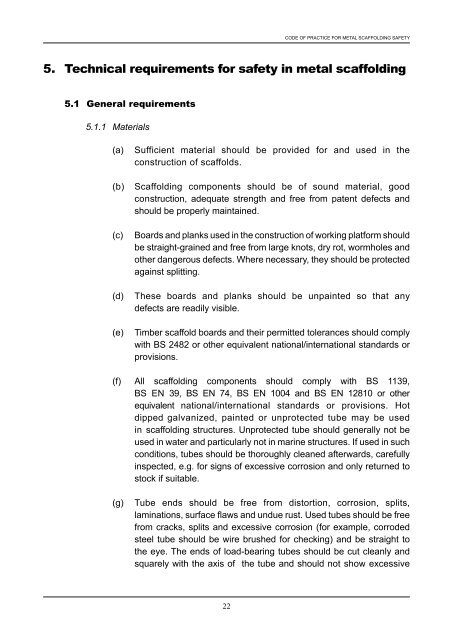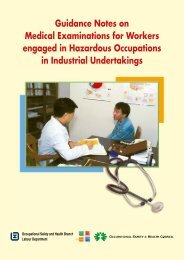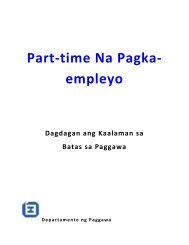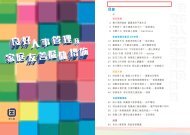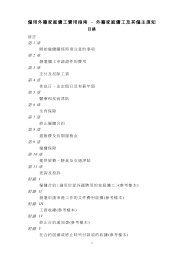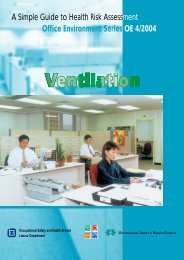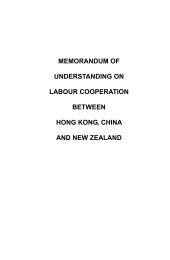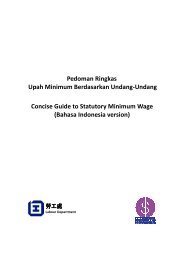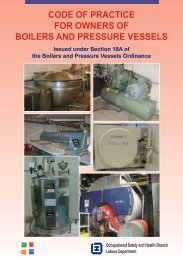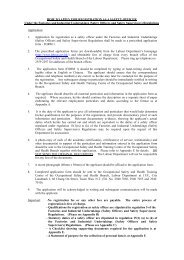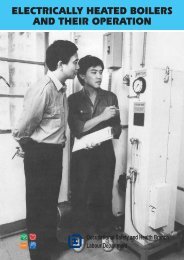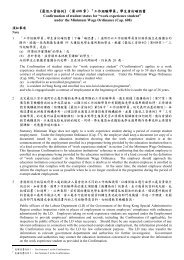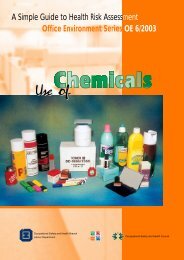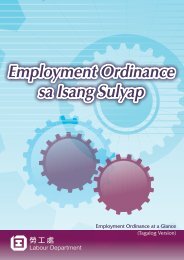CODE OF PRACTICE FOR METAL SCAFFOLDING SAFETY
CODE OF PRACTICE FOR METAL SCAFFOLDING SAFETY
CODE OF PRACTICE FOR METAL SCAFFOLDING SAFETY
Create successful ePaper yourself
Turn your PDF publications into a flip-book with our unique Google optimized e-Paper software.
22<br />
<strong>CODE</strong> <strong>OF</strong> <strong>PRACTICE</strong> <strong>FOR</strong> <strong>METAL</strong> <strong>SCAFFOLDING</strong> <strong>SAFETY</strong><br />
5. Technical requirements for safety in metal scaffolding<br />
5.1 General requirements<br />
5.1.1 Materials<br />
(a) Sufficient material should be provided for and used in the<br />
construction of scaffolds.<br />
(b) Scaffolding components should be of sound material, good<br />
construction, adequate strength and free from patent defects and<br />
should be properly maintained.<br />
(c) Boards and planks used in the construction of working platform should<br />
be straight-grained and free from large knots, dry rot, wormholes and<br />
other dangerous defects. Where necessary, they should be protected<br />
against splitting.<br />
(d) These boards and planks should be unpainted so that any<br />
defects are readily visible.<br />
(e) Timber scaffold boards and their permitted tolerances should comply<br />
with BS 2482 or other equivalent national/international standards or<br />
provisions.<br />
(f) All scaffolding components should comply with BS 1139,<br />
BS EN 39, BS EN 74, BS EN 1004 and BS EN 12810 or other<br />
equivalent national/international standards or provisions. Hot<br />
dipped galvanized, painted or unprotected tube may be used<br />
in scaffolding structures. Unprotected tube should generally not be<br />
used in water and particularly not in marine structures. If used in such<br />
conditions, tubes should be thoroughly cleaned afterwards, carefully<br />
inspected, e.g. for signs of excessive corrosion and only returned to<br />
stock if suitable.<br />
(g) Tube ends should be free from distortion, corrosion, splits,<br />
laminations, surface flaws and undue rust. Used tubes should be free<br />
from cracks, splits and excessive corrosion (for example, corroded<br />
steel tube should be wire brushed for checking) and be straight to<br />
the eye. The ends of load-bearing tubes should be cut cleanly and<br />
squarely with the axis of the tube and should not show excessive


